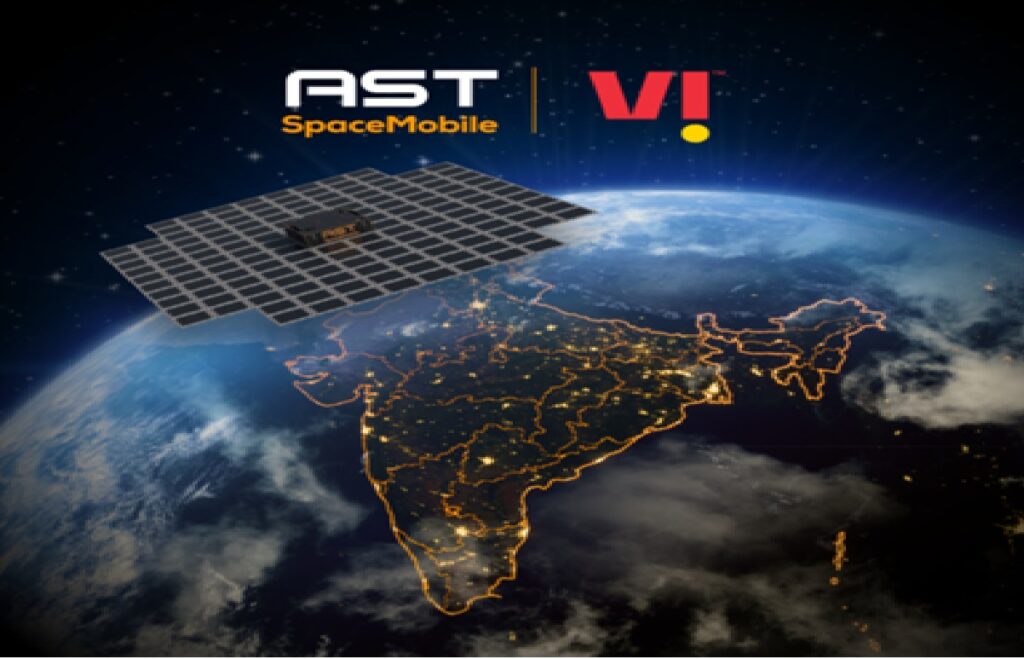Author: Akshay Published Date: June 20, 2025
India’s Connectivity Revolution Begins
On June 18, 2025, Vodafone Idea (Vi) shook up India’s telecom landscape by partnering with AST SpaceMobile, a US satellite pioneer. Their mission? Bring seamless satellite connectivity to standard smartphones – no special apps or bulky equipment needed. This isn’t just another tech upgrade; it’s a potential game-changer for millions beyond the reach of cell towers.
🌐 Why this matters: 1.1 billion Indians use mobile networks, yet vast rural areas, forests, and coastal regions remain connectivity dead zones. Traditional towers can’t fix this – satellites can.
How This Changes Everything
1. Coverage Where Towers Can’t Reach
- Works automatically on existing 4G/5G phones
- Covers forests, mountains, deserts, and oceans
- Switches to satellite when the terrestrial signal drops
2. No Gadgetry Required
Unlike Starlink/OneWeb (which need terminals), Vi+AST’s solution connects directly to your smartphone – a world-first for mass-market use.
3. Real-World Impact
| User Group | Benefit |
|---|---|
| Rural Communities | First-time internet access for education/telemedicine |
| Farmers | Real-time soil/weather sensor data on phones |
| Emergency Services | Lifeline during floods/cyclones when ground networks fail |
| Adventurers | Connectivity in the Himalayas or the Thar Desert |
The Tech Behind the Magic
AST SpaceMobile’s Role
- Launching a Low Earth Orbit (LEO) satellite constellation
- Managing space-to-ground transmission (tested successfully with smartphone video calls in 2025)
Vodafone Idea’s Role
- Integrating satellite handoff into the existing network
- Managing spectrum licensing and consumer rollout
Roadmap
- Pilots are expected to be late in 2025
- Commercial launch timing: “Soon” (exact date TBA)
Why India Needs This
Digital Equality
43% of rural schools lack internet access (NITI Aayog 2024). Satellite connectivity could enable:
- Remote classrooms in tribal areas
- Teleconsultations for village clinics
Economic Catalyst
- Farmers accessing real-time crop prices
- IoT sensors monitoring remote infrastructure
Disaster Resilience
Critical when cyclones/floods destroy ground networks (as seen during the 2023 Himachal floods)
Global Context: India’s Advantage
While Verizon uses AST tech in the US, India’s scale makes this partnership unique:
- 📶 Jio/Airtel offer satellite internet via terminals – Vi skips the hardware
- 🛰️ AST’s direct-to-phone tech suits India’s smartphone-first population
- 💡 Potential to become the world’s largest satellite-connected mobile market
Challenges Ahead
| Hurdle | Status |
|---|---|
| Regulatory Approval | Spectrum licensing pending with DoT |
| Affordability | Satellite data typically costs more – pricing strategy TBD |
| Network Handoff | Must ensure seamless tower-to-satellite transitions |
| Coverage Timeline | Full nationwide reach may take years |
What This Means for Vi
Strategic Win
- First-mover advantage vs. Jio/Airtel
- Stock surged 8% post-announcement (ET Markets)
- New revenue from rural/enterprise/IoT segments
The Bigger Picture
This partnership positions India as a global testbed for space-based connectivity. Success could drive:
- Faster spectrum allocation for satellite services
- Cheaper deployment models for emerging economies
- Tech exports of India-made integration solutions
Bottom Line: Connectivity Without Compromise
Vodafone Idea and AST SpaceMobile aren’t just upgrading networks – they’re redefining what “coverage” means in India. While hurdles remain, the potential is staggering:
🌱 Imagine: A farmer in Odisha checking monsoon forecasts on a basic smartphone, a student in Ladakh attending online classes, or rescue teams coordinating during floods via regular phones.
This could become India’s most transformative telecom leap since 4G – if executed right.
Stay updated: We’ll track regulatory approvals and pilot launches as this story develops.
